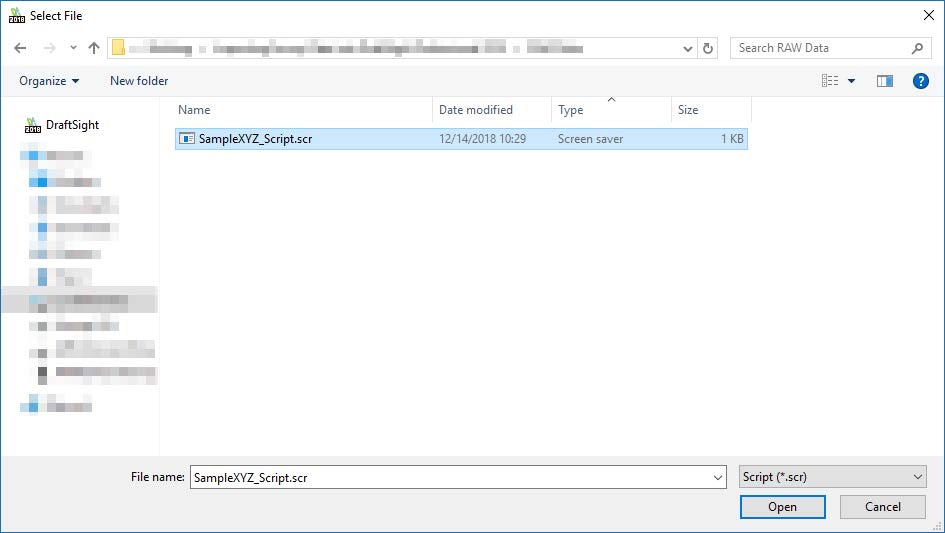

For my money, that makes DraftSight Professional or Enterprise a better choice based on features alone.ĭraftSight Premium/Enterprise Plus has all the above, plus 3D modeling and the ability to use 2D geometric constraints like sketch functionality in SOLIDWORKS.

Some items on that list are not included in AutoCAD LT, such as API’s. It’s primarily intended for hobbyists, students, educators and individuals with basic 2D CAD needs.ĭraftSight Professional/Enterprise adds an assortment of productivity tools for drafters, designers, engineers, architects, machinists and anyone needing a fully featured 2D CAD package:
#Draftsight pdf import upgrade#
They’re commonly a one-year subscription model but can be non-subscription with maintenance upgrade options.ĭraftSight Standard includes basic 2D design and documentation tools, dynamic block support, PDF underlay and makes collaborative community resources available to users. DraftSight Standard, Professional and Premium are stand-alone yearly subscription models.ĭraftSight Enterprise and Enterprise Plus are network licenses allowing the sharing of seats across your organization, a deployment wizard to help with installation and upgrades and technical support services. Since not everyone has the same CAD needs, DraftSight offers five different packages in their portfolio. Heads-Up toolbar like the Context toolbar.The benefit being that in addition to offering familiarity for AutoCAD users, it also has some familiarity for SOLIDWORKS users as well: Like SOLIDWORKS, DraftSight is part of the Dassault Systemes family of products. If you prefer the modern ribbon-style menu over the classic toolbars, there’s a pull-down on the upper left to allow you to toggle between the two layouts. Here’s one of my legacy AutoCAD drawings which opened with no trouble: The Options dialog is easy to navigate and the search field makes it easy for locating the setting you’re looking to put in place. It only took me a few minutes to customize DraftSight to my dinosaur-like preferences, with a full-screen cross-hair and toolbars above the graphics area. Watch the video below for a quick recap on the 2020 updates for DraftSight. Customize it to look and feel the way you like it. Keep using those same LISP routines you’ve been using for years. Use a menu layout and command names you already know, including your favorite keyboard aliases. Have colleagues still using an ancient version of AutoCAD? You can save files in older DWG or DXF formats for them.

Keep using your old templates and standard layers. Really! Open your old AutoCAD files with no need to go through an export-import process. Imagine a CAD package using the exact same DWG file format as your existing drawings, all the professional quality tools you need, the look and feel you already know, at a fraction of the price? They didn’t have the budget to convert or re-create all the drawings that needed to be maintained, and AutoCAD LT had too many features stripped out of it to be a viable option, so it looked like we were stuck… or so I thought. They considered abandoning AutoCAD entirely, but this meant that decades worth of 2D drawings which were still in active product lines could be lost.
#Draftsight pdf import software#
One day, the company I was working for at the time needed to change to a software that had the capability of 3D modeling and running LISP routines. I appreciated the sheer power and capability of parametric modeling in SOLIDWORKS, but never got over my affection for the look and feel of 2D AutoCAD so I stuck to using both sets of software. Whenever I needed to do 3D CAD work I used SOLIDWORKS. Like most people I used AutoCAD primarily for 2D drafting and design work, but also for non-parametric 3D modeling on occasion. In this article, I’m going to talk about the features I discovered that made me switch from AutoCAD to DraftSight and why I think you should too. For more than twenty-seven years, I used AutoCAD but it was time to change, so I switched to DraftSight and have never looked back. The menu layout, the command line, the color scheme and all the customized buttons and LISP routines you’ve painstakingly created over the years combine to form a cozy, familiar environment you’re more than a little reluctant to leave behind. For some, working in AutoCAD feels like a comfortable, well-worn glove.


 0 kommentar(er)
0 kommentar(er)
